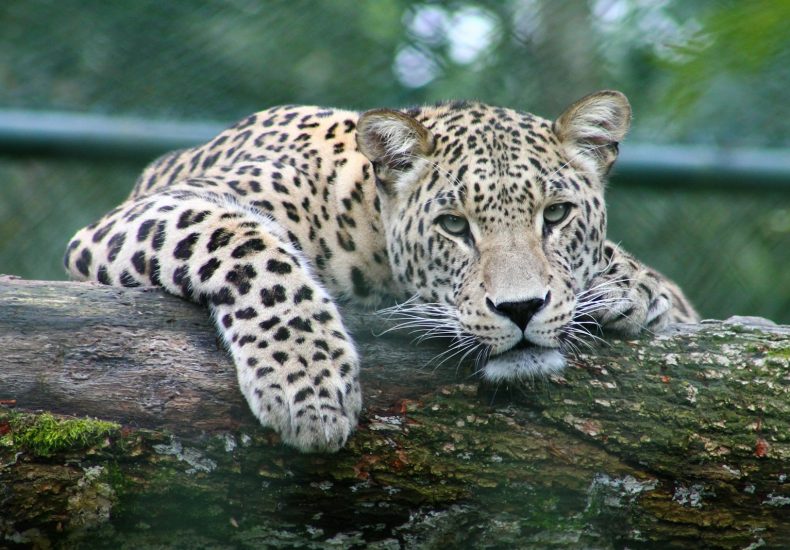
10 Endangered Species You Should Know About
Discover the 10 Endangered Species You Should Know About
Every day, wildlife around the globe faces unprecedented threats—from habitat loss and climate change to poaching and illegal trade. While many species slip silently into extinction, a few iconic animals capture public attention and become symbols of the broader crisis. Understanding which species are most at risk and why they matter is the first step toward meaningful conservation. Below, we explore ten endangered species that deserve your attention, explain the challenges they face, and highlight practical ways you can help protect them.
1. Amur Leopard (Panthera pardus orientalis)
The Amur leopard, native to the temperate forests of the Russian Far East and northeastern China, is one of the world’s rarest big cats. With fewer than 100 individuals left in the wild, it is classified as critically endangered. Poaching for its beautiful spotted coat and loss of forest habitat are the primary drivers of its decline.
- Key threat: Illegal hunting and deforestation.
- Conservation success: Anti‑poaching patrols and habitat corridors have increased the population by roughly 20% over the past decade.
- How you can help: Support organizations that fund anti‑poaching units and purchase certified sustainable timber.
2. Vaquita (Phocoena sinus)
The vaquita is a small porpoise that lives exclusively in Mexico’s Gulf of California. It holds the grim title of the most endangered marine mammal, with estimates suggesting fewer than 10 individuals remain. Bycatch in illegal gillnets—intended for the lucrative totoaba fish—has driven the species to the brink of extinction.
- Key threat: Bycatch in illegal gillnets.
- Conservation success: A 2022 ban on gillnets in the vaquita’s core habitat has reduced accidental catches, but enforcement remains weak.
- How you can help: Advocate for stricter enforcement of fishing regulations and donate to marine rescue initiatives.
3. Javan Rhino (Rhinoceros sondaicus)
Only about 75 Javan rhinos survive today, all confined to Ujung Kulon National Park in Indonesia. Once roaming across Southeast Asia, they have been decimated by habitat conversion for agriculture and relentless poaching for their horns.
- Key threat: Habitat loss and poaching.
- Conservation success: Intensive monitoring and a strict anti‑poaching regime have stabilized the population.
- How you can help: Contribute to wildlife corridors that expand protected land and support anti‑poaching technology.
4. Hawksbill Sea Turtle (Eretmochelys imbricata)
Recognizable by its beautiful, overlapping shell plates, the Hawksbill sea turtle is a cornerstone of coral reef ecosystems. Overexploitation for its prized “tortoiseshell” and loss of nesting beaches have left it listed as endangered worldwide.
- Key threat: Illegal trade of tortoiseshell and coastal development.
- Conservation success: Community‑based nesting patrols have increased hatchling survival rates in the Caribbean.
- How you can help: Avoid products made from turtle shell, support beach clean‑ups, and donate to sea‑turtle rescue groups.
5. Sumatran Orangutan (Pongo abelii)
Sumatran orangutans are the only great apes that still inhabit the island of Sumatra. Deforestation for palm oil plantations, logging, and human‑wildlife conflict have reduced their numbers to roughly 14,000 individuals, earning them a critically endangered status.
- Key threat: Habitat conversion for palm oil.
- Conservation success: Certification schemes like RSPO have slowed forest loss in key habitats.
- How you can help: Choose palm‑oil‑free products and support NGOs that purchase and protect forest land.
6. Asian Elephant (Elephas maximus)
Asian elephants once roamed across 13 countries, but today fewer than 50,000 remain in fragmented habitats. Human‑elephant conflict, poaching for ivory and meat, and habitat fragmentation threaten their survival.
- Key threat: Habitat fragmentation and human‑elephant conflict.
- Conservation success: Early‑warning systems and elephant corridors have reduced fatal encounters in India and Sri Lanka.
- How you can help: Support projects that create wildlife corridors and promote coexistence programs.
7. Snow Leopard (Panthera uncia)
Living high in the rugged mountains of Central Asia, the snow leopard is a symbol of wilderness. Illegal hunting for its fur and bones, combined with prey depletion, have placed it on the vulnerable list, with an estimated 4,000–6,500 individuals left.
- Key threat: Poaching and prey loss.
- Conservation success: Community‑based livestock insurance schemes have reduced retaliatory killings.
- How you can help: Donate to programs that provide alternative livelihoods for mountain communities.
8. Red Panda (Ailurus fulgens)
Red pandas inhabit the temperate forests of the Himalayas and southwestern China. Deforestation, road expansion, and illegal pet trade have slashed their numbers, earning them a endangered status.
- Key threat: Habitat loss and illegal trade.
- Conservation success: Protected area networks in Nepal and Bhutan have created safe havens.
- How you can help: Support eco‑tourism initiatives that fund forest protection and raise awareness.
9. Philippine Eagle (Pithecophaga jefferyi)
Often called the “king of the forest,” the Philippine eagle is one of the largest eagles in the world. Deforestation for mining and agriculture has left fewer than 400 mature individuals, classifying it as critically endangered.
- Key threat: Deforestation and habitat fragmentation.
- Conservation success: Captive‑breeding programs have begun reintroducing fledglings into protected forests.
- How you can help: Contribute to habitat restoration projects and spread awareness about sustainable forestry.
10. Bengal Tiger (Panthera tigris tigris)
The Bengal tiger, a flagship species for wildlife conservation, still faces severe pressures from poaching, habitat encroachment, and human‑tiger conflict. Although numbers have risen slightly due to intensive protection, the species remains endangered with an estimated 2,500–3,000 individuals in the wild.
- Key threat: Poaching for body parts and loss of prey base.
- Conservation success: Tiger reserves in India and Bangladesh have increased tiger sightings by over 30% in the last decade.
- How you can help: Support anti‑poaching patrols, adopt a tiger through reputable wildlife funds, and promote responsible tourism.
Why Knowing These Species Matters
Each of these ten species plays a unique role in its ecosystem—whether as apex predators, seed dispersers, or keystone pollinators. Their decline signals broader environmental problems that ultimately affect human well‑being, from reduced biodiversity to diminished ecosystem services such as clean water and carbon sequestration. By learning about these endangered animals, you become part of a global network of informed citizens who can drive change.
How You Can Take Action Today
Protecting threatened wildlife isn’t limited to large NGOs; everyday actions add up. Here are practical steps you can adopt right now:
- Choose products certified as rainforest‑friendly or sustainably sourced to reduce habitat destruction.
- Support legislation that bans illegal wildlife trade and funds protected area management.
- Donate to or volunteer with reputable conservation groups focused on the species you care about most.
- Spread awareness on social media using hashtags like #SaveEndangeredSpecies and #ConservationMatters.
- Participate in citizen‑science projects that monitor local wildlife populations.
Ready to make a difference? Join a global conservation movement today and help protect the planet’s most vulnerable species. Every click, donation, and conversation brings us one step closer to a thriving, biodiverse future.



